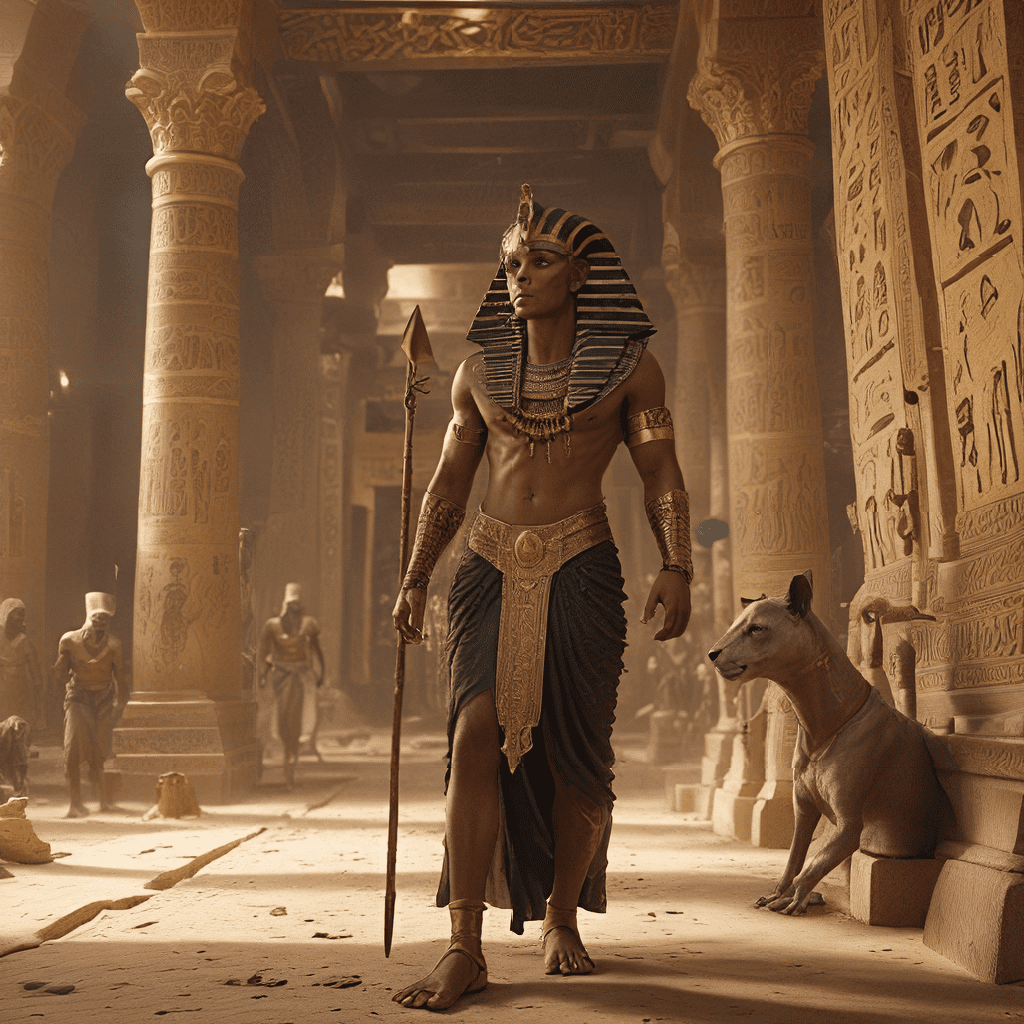Where Pharaohs Dance: A Journey Through Egyptian Funerary Practices
1. Introduction: The Significance of the Afterlife
Ancient Egyptians held a deep fascination with the afterlife, believing it was just as important as life on Earth. They envisioned a journey for the soul after death, aiming to achieve eternal life in a paradise called the Field of Reeds. Preserving the body and possessions was crucial for this journey, as they were believed to be essential for the deceased’s well-being in the afterlife.
2. The Journey of the Soul: From Death to Rebirth
The Egyptians believed that each person had two souls: the “Ka,” representing the life force, and the “Ba,” embodying the personality. After death, the soul embarked on a perilous journey through the underworld, facing trials and challenges. Mummification was central to this journey, a complex process that involved preserving the body. It was performed by skilled priests, who would carefully remove organs, dry the body with salts, and wrap it in linen bandages. This process symbolized the transformation of the deceased into a divine being, ready to face the afterlife. The “Book of the Dead” served as a guidebook, containing spells and instructions to aid the deceased in their journey.
3. The Tomb: A Gateway to Eternity
The tomb, a grand structure, was more than just a burial place; it was a symbolic gateway to the afterlife. For pharaohs, these massive structures, like the pyramids, were monuments to their power and legacy. The tomb was filled with treasures and offerings, and its walls were adorned with intricate paintings and carvings depicting scenes from daily life and the afterlife, providing sustenance and comfort to the deceased in the next world. These images served as a reminder of the pharaoh’s deeds and the beliefs of the time.
4. The Role of Gods and Goddesses
Ancient Egyptian mythology played a crucial role in funerary practices. The god Anubis, with his jackal head, guided the deceased through the afterlife, presiding over mummification and protecting the body. Osiris, the judge of the dead and lord of the underworld, weighed the heart of the deceased against a feather of Ma’at, the goddess of truth and justice, to determine their fate. If they were found worthy, they received eternal life in the Field of Reeds. Horus, the protector of the pharaoh and the deceased, ensured their safe passage into the afterlife.
5. The Rituals of the Funerary Process
The funerary process was a complex and ritualistic affair, lasting for many days. The body was meticulously prepared for burial, starting with purification and embalming. The Opening of the Mouth Ceremony was a vital ritual, where priests would symbolically open the mouth and senses of the deceased using special tools, allowing them to speak, eat, and see in the afterlife. The burial ceremony involved elaborate offerings of food, drink, and precious objects, intended to sustain the deceased and facilitate their journey.
6. The Afterlife: Trials and Triumphs
The afterlife was a perilous and challenging journey for the deceased. They were guided by Anubis through the treacherous underworld, filled with obstacles and monstrous creatures. The deceased would face a judgment before Osiris, where their heart was weighed against the feather of Ma’at. If the heart was lighter than the feather, indicating a virtuous life, the deceased was allowed to enter the Field of Reeds, a paradise of eternal life and happiness. If not, they were devoured by the monster Ammit, a creature with a crocodile head, lion paws, and a hippopotamus body.
7. Funerary Objects and Their Symbolism
The Egyptians buried their dead with a variety of objects, each with a specific meaning and purpose in the afterlife. Amulets and scarabs, carved from precious stones, were believed to offer protection and good luck. Canopic jars, crafted from alabaster or limestone, held the organs of the deceased, ensuring their preservation in the afterlife. Funerary masks, often made of gold or painted plaster, were placed over the face of the deceased, representing the pharaoh’s image and offering protection.
8. The Evolution of Funerary Practices
Funerary practices in ancient Egypt evolved over time. While the core beliefs remained constant, the scale and complexity of tombs and rituals varied depending on the social status and wealth of the deceased. The development of mummification techniques, the role of specific deities, and the imagery depicted in tombs shed light on the evolving beliefs and practices of the Ancient Egyptians. The rich legacy of Egyptian funerary practices continues to fascinate and inspire us today, offering a glimpse into the ancient world’s complex relationship with death and the afterlife.




